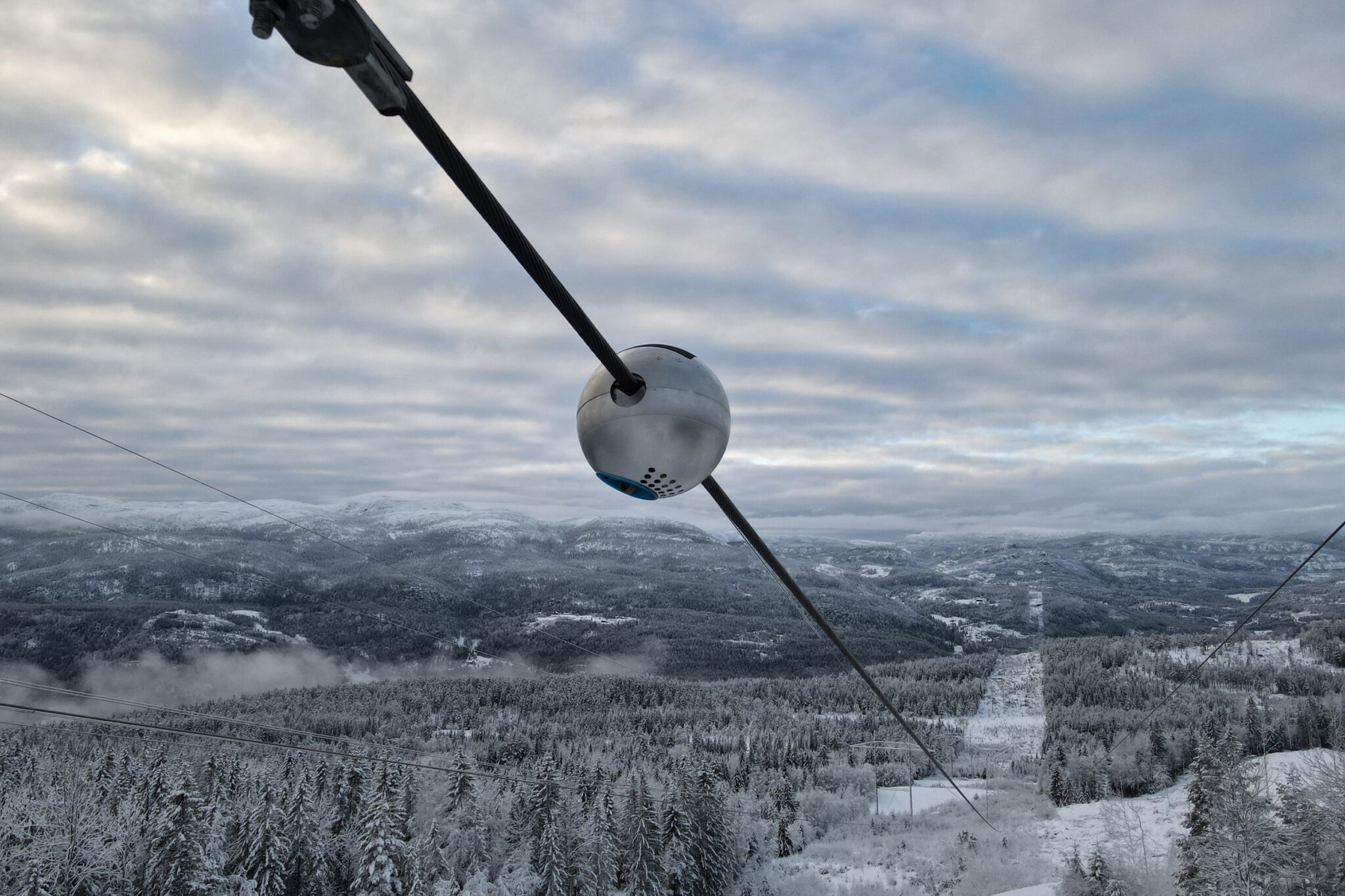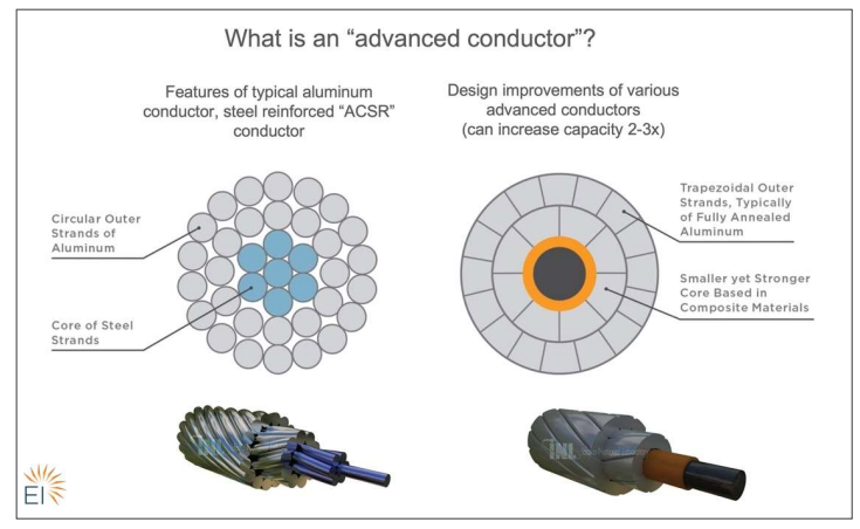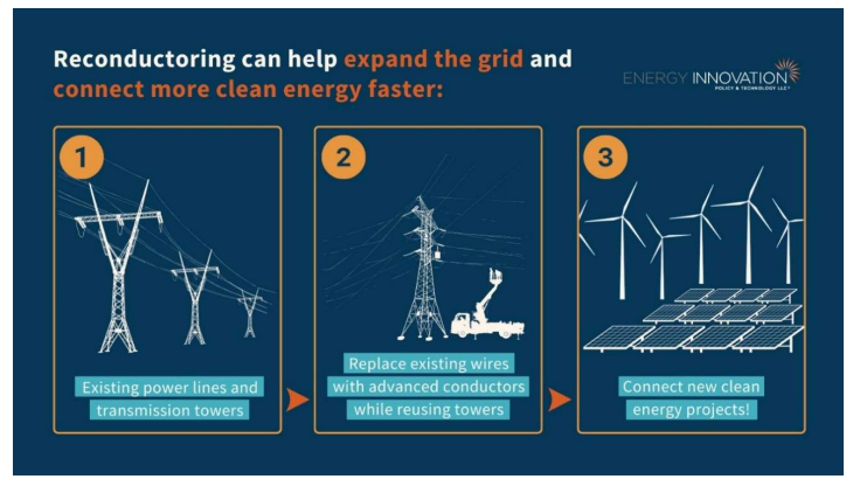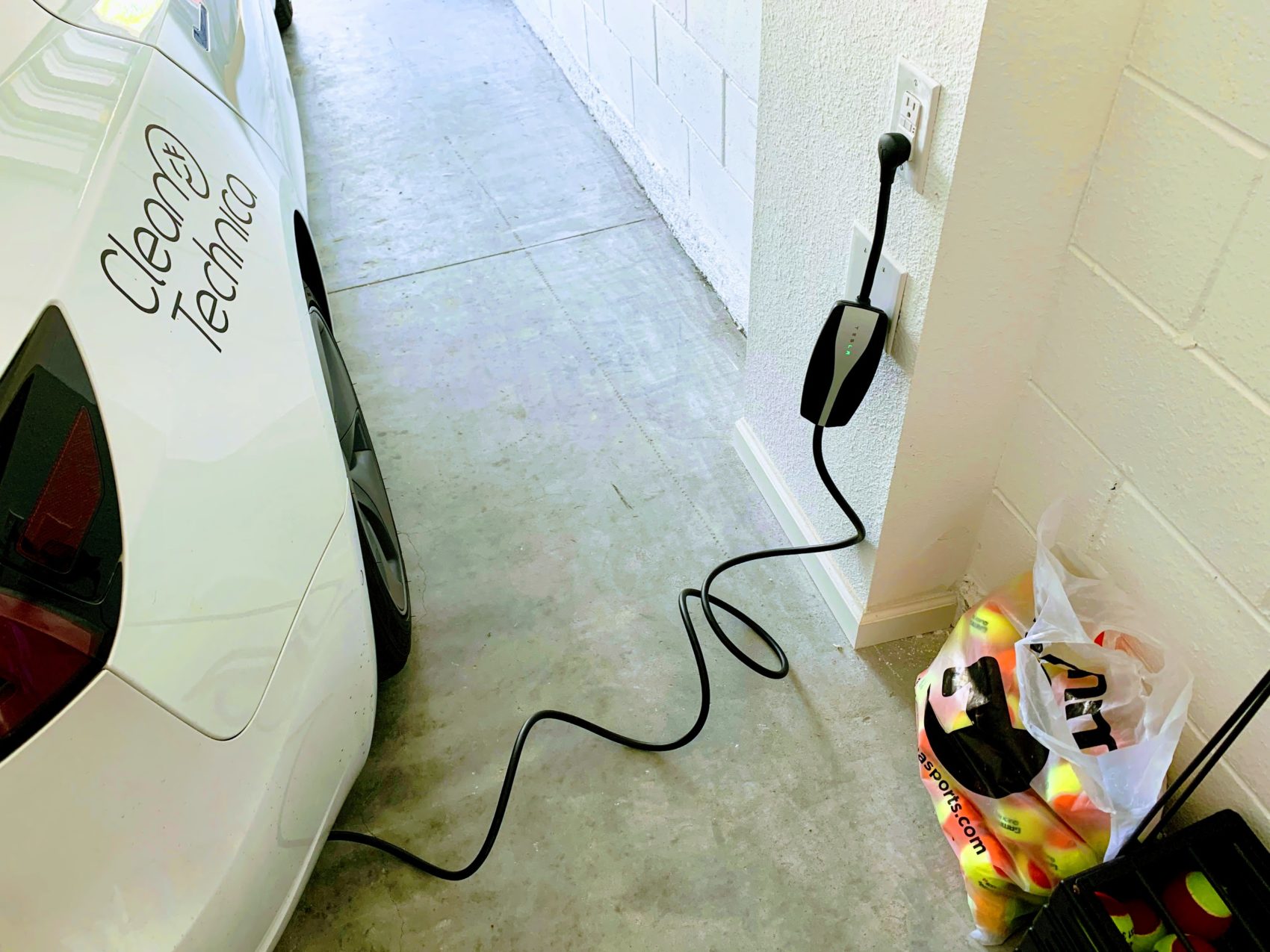Sign up for daily news updates from CleanTechnica on email. Or follow us on Google News!
Everyone pretty much agrees the US electrical grid will need modernizing as the demand for electrons to power EVs, green steel, data centers, and heat pumps increases. We also know that building new transmission lines is a long and expensive process fraught with obstacles ranging from permitting to supply chains. There is an old expression that says, “Don’t raise the bridge, lower the river.” There are new technologies available that may allow the existing grid to carry more electricity without all those messy policy hurdles to jump over.
One of them is the so-called “magic ball” from Norway’s Heimdall, a bowling ball-sized device that fits around HVDC lines to measure their temperature. Cooler wires can carry more electrons, but most transmission line operators have no ability to know the actual temperature of their wires, so they guess. Not surprisingly when talking about infrastructure worth billions of dollars, those guesses tend to be on the low side.

By knowing the precise temperature of the transmission wires, grid operators know how close a particular line is to its maximum capacity. “Think about the temperature on the line as being the speed limit,” Jørgen Festervoll, CEO of Heimdall, told Inside Climate News. “Without the software and sensor, like the ones Heimdall Power provides, you’re driving without a speedometer.” By knowing exactly how much power a line can handle, a grid operator can increase the flow of power for hours or even days without exceeding the capacity of a transmission line. Same line, more electricity transmitted, more revenue for grid operators, and more clean electricity from renewable energy resources, What a sweet deal!
Reconductoring & The US Grid
There is another new technology available that can also dramatically increase the capacity of the HVDC transmission lines that are the backbone of the electrical grid. Replacing existing power lines with cables made from advanced materials could nearly double the capacity of the electric grid in many parts of the country, making room for much more wind and solar power. The technique is known as “advanced reconductoring” and is widely used in other countries. But many US utilities have been slow to embrace it because of their unfamiliarity with the technology as well as regulatory and bureaucratic hurdles, according to new research.
Today in the US, most power lines consist of steel cores surrounded by strands of aluminum, a design that has been used for a century. Twenty years ago, several companies developed cables that used smaller, lighter cores such as carbon fiber that could hold more aluminum. These advanced cables can carry up to twice as much current as older wires.

Reconductoring transmission lines could add about 64 TW-miles of new inter-zonal transmission capacity by 2035, compared to about 16 TW-miles from only building new transmission lines, the Berkeley research suggests. “We were pretty astonished by how big of an increase in capacity you can get by reconductoring,” Amol Phadke, a senior scientist at Berkeley, told the New York Times. “It’s not the only thing we need to do to upgrade the grid, but it can be a major part of the solution.”
Replacing old lines with advanced conductors usually costs half as much as building new lines, partly because it uses existing infrastructure, according to Utility Dive. The additional inter-zonal transmission capacity unlocked with advanced conductors will provide access to lower cost clean energy, reducing wholesale electricity costs by 3% to 4% on average. That amounts to $85 billion in system cost savings by 2035 and $180 billion by 2050, compared to business as usual. The additional transmission capacity from reconductoring would allow the United States to get 90% of its electricity from emissions-free power sources by 2035, according to the report.
Replacing old lines can be done relatively quickly. In 2011, AEP, a utility in Texas, urgently needed to deliver more power to the Lower Rio Grande Valley to meet soaring population growth. It would have taken too long to acquire land and permits and to build towers for a new transmission line. Instead, AEP replaced 240 miles of wires on an existing line with advanced conductors, which took less than three years and increased the carrying capacity of the lines by 40%.
Making Room For More Wind & Solar On The Grid

If utilities began deploying advanced conductors on a nationwide scale by replacing thousands of miles of wires, they could add four times as much transmission capacity by 2035 as they are currently on pace to do. That, in turn, would allow the use of much more solar and wind power from thousands of projects that have been proposed but can’t move forward because local grids are too clogged to accommodate them.
The sluggish build-out of the electric grid is the Achilles’ heel of the transition to cleaner energy in the opinion of many industry professionals. The Energy Department estimates that the nation’s network of transmission lines may need to expand by two-thirds or more by 2035 to meet President Biden’s goals to power the country with clean energy. But building new transmission lines can take a decade or more for developers to site a new line through multiple counties, receive permission from a patchwork of different agencies, and address lawsuits about spoiled views or damage to ecosystems. Last year, the United States added just 251 miles of high voltage transmission lines to the electrical grid. That number has been declining every year for the past decade.
In 2022, Congress approved the Inflation Reduction Act, which makes billions of dollars available for solar panels, wind turbines, electric vehicles, and other non-polluting technologies. But if the United States can’t add new transmission capacity more quickly, roughly half the emission reductions expected from that law may not materialize, researchers at the Princeton-led REPEAT Project found.
European Countries Are Leading The Way
Countries like Belgium and the Netherlands have been deploying advanced conductors in order to integrate more wind and solar power into their grid infrastructure, said Emilia Chojkiewi, one of the authors of the Berkeley report. “We talked with the transmission system planners over there and they all said this is a no-brainer. It’s often difficult to get new rights of way for lines and reconductoring is much faster.”
One of the questions addressed by researchers at GridLab is, if reconductoring is so effective, why don’t more utilities in the United States do it? The answer is partially that the fragmented nature of America’s electrical grid system is a huge hurdle. It is actually three grids operated by 3,200 different utilities and a complex patchwork of regional planners and regulators. That means new technologies — which require careful study and worker retraining — sometimes spread more slowly than they do in countries with just a handful of grid operators.
There are also mismatched incentives. Because of how utilities are compensated, they often have more financial incentive to build new lines rather than upgrade existing equipment. Conversely, some regulators are wary of the higher upfront cost of advanced conductors, even if they pay for themselves over the long run. Many utilities also have little motivation to cooperate with one another on long term transmission planning. “The biggest barrier is that the industry and regulators are still caught in a short-term, reactive mind set,” said Casey Baker, a senior program manager at GridLab. “But now we’re in an era where we need the grid to grow very quickly, and our existing processes haven’t caught up with that reality.”
Change Is In The Air
Things may be starting to change. In Montana, Northwestern Energy recently replaced part of an aging line with advanced conductors to reduce wildfire risk. The new line sagged less in the heat, making it less likely to make contact with trees. Pleased with the results, Montana legislators passed a bill that would give utilities financial incentives to install advanced conductors. A bill in Virginia would require utilities to consider the technology.
With electricity demand beginning to surge for the first time in two decades because of new data centers, factories and electric vehicles, many utilities are getting over their wariness about new technologies. “We’re seeing a lot more interest in grid-enhancing technologies, whether it’s reconductoring or other options,” said Pedro Pizarro, the president and chief of executive of Edison International, a California power company, and the chairman of the Edison Electric Institute, a utility trade organization. “There’s a sense of urgency.”
The Takeaway
CleanTechnica readers, who are all above average and particularly astute, will spot the elephant in the room here right away. The Biden administration can pour all the billions it wants into clean energy technology and manufacturing, but until utility companies and grid operators have a financial incentive to cooperate to make the grid in America function efficiently and at peak capacity, all that lovely clean energy will never get to where it is needed. This is not a technological barrier, it is an economic barrier that ultimately leads back to a welter of conflicting policies.
It would be wonderful if we had unlimited time to sort this all out, but we don’t. The destruction of the environment from extracting and burning fossil fuels is accelerating. We don’t have time to waste on silly games and internecine rivalries between those who design, build, and operate the grid. We have to do better and we have to do it soon. Full stop.
Have a tip for CleanTechnica? Want to advertise? Want to suggest a guest for our CleanTech Talk podcast? Contact us here.
Latest CleanTechnica.TV Video
CleanTechnica uses affiliate links. See our policy here.





